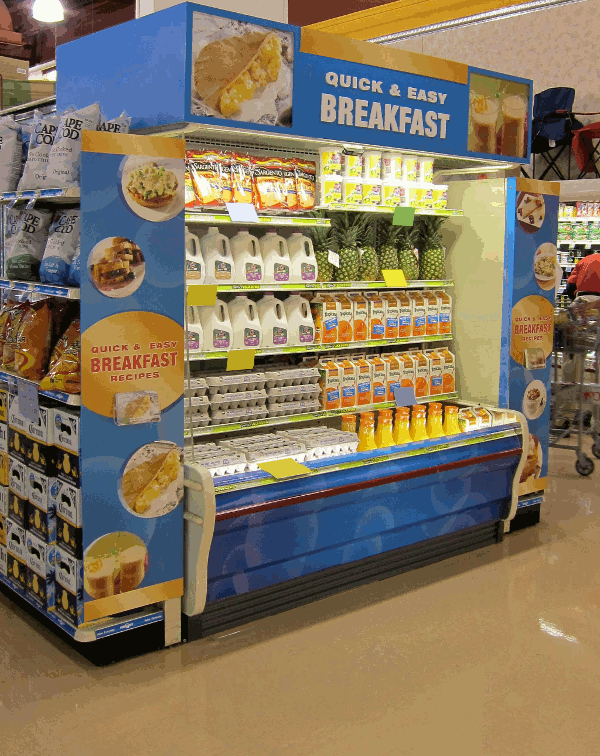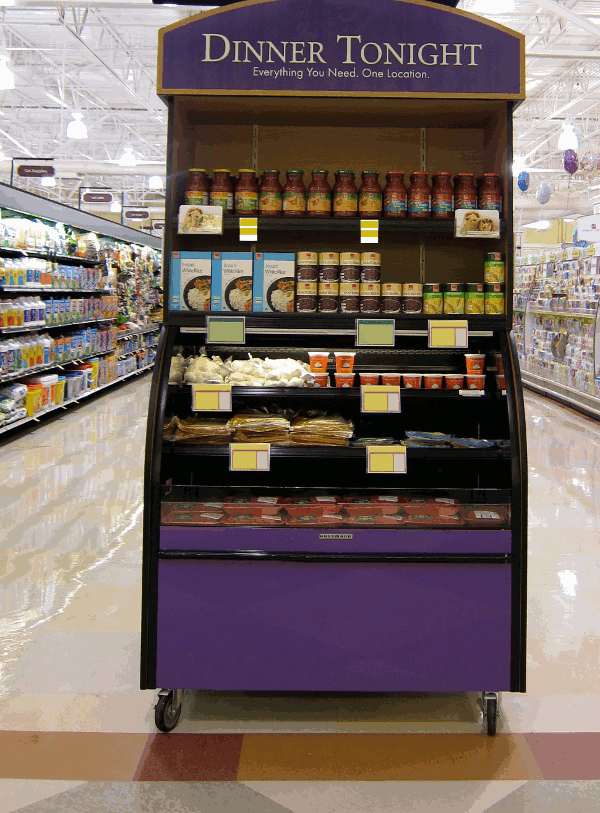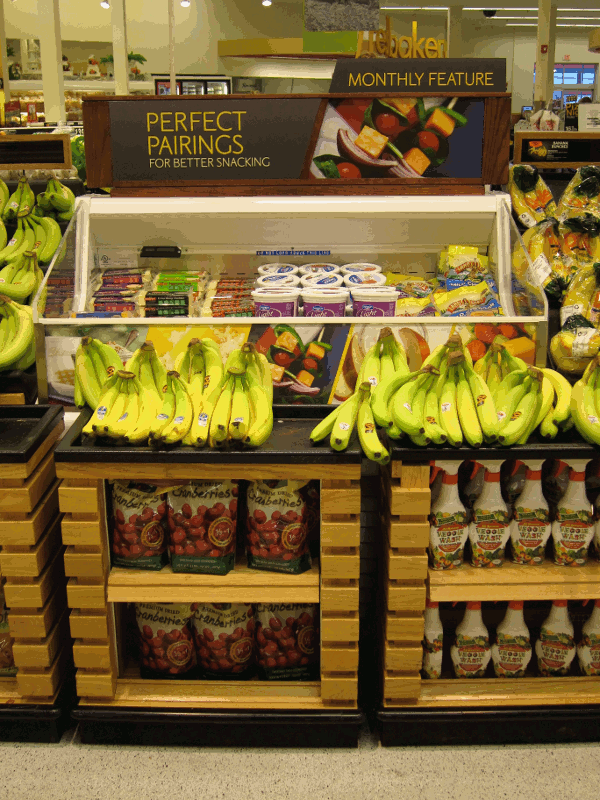 By Rebecca MacKay, vice president, strategy, insights and planning, Innovation Center for U.S. Dairy
By Rebecca MacKay, vice president, strategy, insights and planning, Innovation Center for U.S. Dairy
Dairy is a retail superstar, outperforming every other department with its profit-to-space ratio (which is almost double that of produce). Dairy products are included in more grocery trips than items from nearly every other aisle, and milk, cheese and yogurt are key meal-builders.
Now, in-store research from the Innovation Center for U.S. Dairy®, which was founded by America’s dairy producers, identifies an opportunity for dairy products to drive incremental increases in dollar sales — recent pilots garnered an average increase of 20 percent through meal solutions merchandising.
This novel approach addresses consumers’ busy lifestyles by making preparing a homemade meal easier. It gives shoppers recipes and all the key ingredients in one location and rotates them frequently so the merchandisers serve as true resources, trip after trip.

|

|
The Innovation Center tested five consumer-insight-driven merchandising concepts addressing the breakfast, snacking and dinner eating occasions.
Fuel Your Day: This dedicated cooler in the deli/on-the-go department answered consumers’ quests for healthy accompaniments to weekday meals and their increased interest in food that “provides energy.” Grouping single-serve milk, yogurt, parfaits and granola bars garnered an average 4.8 percent increase in units sold and 2.1 percent increase in dollar sales
Breakfast Zone: This dairy department endcap capitalized on consumers’ desires for easy, fun and healthy breakfast options by bringing together products such as yogurt, pineapples, milk and juice for smoothies. The recipes and ingredients rotated monthly to drive an average increase of 13.6 percent for units sold and 8.4 percent in dollar sales.
Perfect Pairings: The second snacking-focused pilot addressed shoppers’ interest in new ideas and fresh twists on old favorites for snacks. This produce department co-merchandiser paired fruit with snack cheese and yogurt, leading to an average incremental impact of 32.3 percent for units sold and 35.8 percent for dollar sales.
Chef’s Creation: Baby boomers and other dual-income, no-kids households are interested in more creative meals and find appeal in brand names and celebrity advocates. This mobile merchandiser leveraged a local chef to offer recipes that provide a high-quality experience without the cost of a restaurant meal. Recipes such as summer vegetable risotto combined center-store items with produce and dairy to drive an average 8.5 percent increase in units sold and 12.3 percent increase in dollar sales.
 What’s for Dinner: This dedicated endcap near the dairy department answers moms’ wishes for convenient, nutritious, family-pleasing dinners that offer variety and excitement. New recipes each week, such as beef burritos and cheese and veggie calzones, featured kid-pleasing products. Consumer interest achieved an average incremental sales impact of 28.1 percent for units and 32.1 percent for dollar sales.
What’s for Dinner: This dedicated endcap near the dairy department answers moms’ wishes for convenient, nutritious, family-pleasing dinners that offer variety and excitement. New recipes each week, such as beef burritos and cheese and veggie calzones, featured kid-pleasing products. Consumer interest achieved an average incremental sales impact of 28.1 percent for units and 32.1 percent for dollar sales.
Key Takeaways
Additionally, the pilot tests drove six best practices for a meal solutions merchandising program:
1. Remember: Convenience is king. Keep this benefit front of mind when evaluating all aspects of a meal solutions program.
2. Situate displays earlier in the shopping pattern in intuitive locations to maximize convenience.
3. Ensure displays are highly visible for shoppers — this will build consumer understanding of the meal solutions concept.
4. Keep the product mix streamlined with only the most relevant SKUs; anything else is a distraction.
5. Avoid overcrowding displays with too many products; the simpler, the better.
6. View meal solutions merchandising as a long-term solution instead of a quick fix. It takes time and repeated exposure for consumers to adjust their behavior.
 There are more resources, including an execution summary that outlines each merchandising concept and the full report, at USDairy.com/Retailers.
There are more resources, including an execution summary that outlines each merchandising concept and the full report, at USDairy.com/Retailers.

Recent Comments
Discount code
Alex Shimray
Thank you for sharing this! This is really...
Thank you for sharing this! This is really...
yes, nowadays more teenagers like to have a...